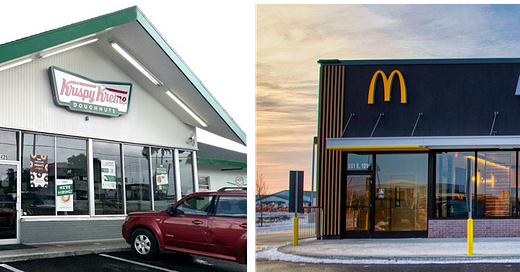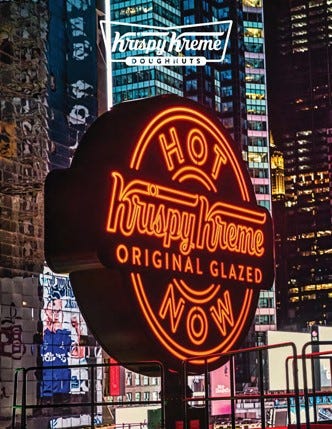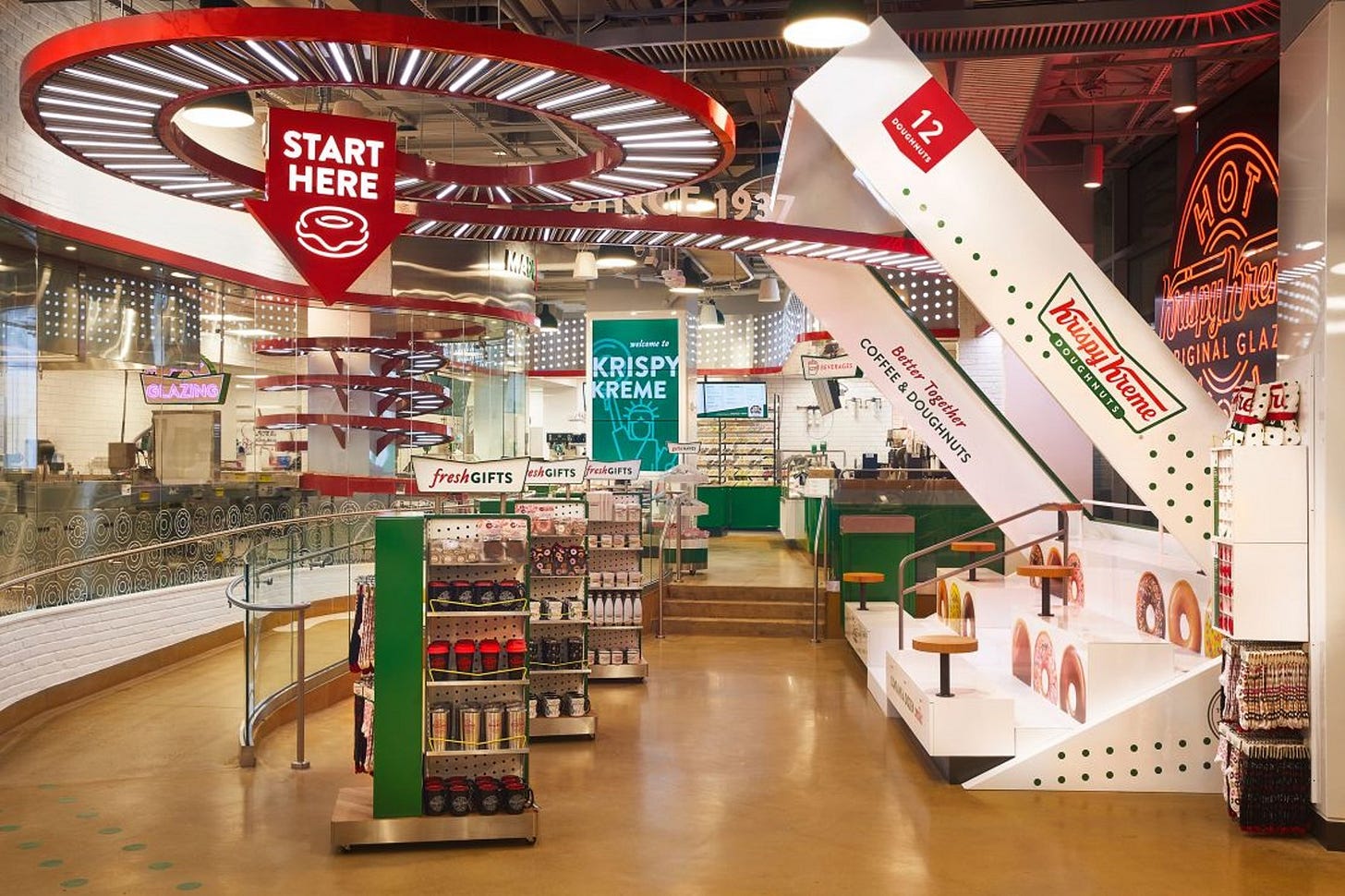Krispy Kreme Ends Its Partnership With McDonald's: Why The Doughnut Maker's Investments In Its "Hub and Spoke" Real Estate May Still Pay Off
Even though Krispy Kreme will not be providing doughnuts to the ~14,000 McDonald's restaurants in the U.S., its new adaptive reuse real estate hubs may still offer a path to higher sales and profits
Nearly three years after Krispy Kreme DNUT 0.00%↑ began selling doughnuts at ~170 McDonald’s MCD 0.00%↑ restaurants in Kentucky, the doughnut maker has ended its partnership with the fast food giant.
Early results had appeared promising and Krispy Kreme made real estate investments to serve additional markets.
By Spring 2025 Krispy Kreme was supplying doughnuts to ~2,400 McDonald's restaurants across several states with plans to serve all ~14,000 McDonald’s restaurants in the U.S. by the end of 2026.
But with the McDonald’s tie-up now over what will be the impact to Krispy Kreme's real estate?
Krispy Kreme had been investing significantly in its infrastructure to provide doughnuts to all McDonald’s sites in the U.S.
Particularly its real estate.
Krispy Kreme operates a ‘hub and spoke’ real estate model for the production and distribution of doughnuts.
The way it works is straightforward:
Most Krispy Kreme doughnuts are baked at ‘hubs’ — which consist of both dedicated production factories as well as ‘Hot Light' theater shops where doughnuts are served to onsite customers and distributed fresh daily (DFD) to ‘spokes’ such as gas stations, grocery stores, warehouse clubs and restaurants.
In a hub and spoke model, most activities are carried out at the hub rather than the individual nodes.
So while the establishment of the hub may require a major capital investment, new spoke additions can easily be created—at a relatively small expense—and generate significant economies of scale.
For instance, while it may cost Krispy Kreme over $3 million to develop a new Hot Light theater shop, the investment to open a shop where doughnuts are sold but not baked is generally under $500,000.
And it costs less than $10,000 to set up new DFD cabinets in a grocery store or gas station.
Krispy Kreme hubs are big revenue generators for the Company.
An average U.S. Krispy Kreme hub store generates ~$4.9 MM in annual revenue from on-site sales and those to its DFD spokes.
For context that is 3-4x higher than annual sales at an average Starbucks, Dunkin, or Dutch Bros site!
Krispy Kreme currently operates approximately 154 U.S. hubs that collectively distribute to just under 7,000 DFD spokes, or about 45 spokes per hub.
Krispy Kreme’s 40 international hub stores are even more efficient.
They serve 4,000 access points—or 100 per hub—and generate nearly $10 MM in average annual revenue per site, or about twice the amount of a domestic hub.
However Krispy Kreme did not have the capacity or geographic reach to simply add ~14,000 new McDonald’s spokes to its existing hubs.
Krispy Kreme had to have more doughnut-producing real estate—such as additional production facilities and larger hubs in strategic locations that could efficiently serve more spokes.
Plus with the McDonald’s restaurants spread across urban, suburban and rural areas throughout the country, Krispy Kreme needed new hubs in areas where it did not have an existing presence.
So Krispy Kreme began to develop larger hubs in new locations—in part by using unconventional real estate.
Like its repurpose of a former CVS drugstore as a soon-to-open doughnut hub in the Minneapolis area—Krispy Kreme’s first Minnesota store since it had exited the market in 2008.
The ~13,000 square foot former CVS building (which is >5x the size of a standard Krispy Kreme hub store) is modern, well-located and equipped with key infrastructure such as easy highway access, loading bays and even a drive-thru.
Plus it is large enough to include areas dedicated to doughnut production, warehousing, DFD staging and loading onto delivery trucks.
The former CVS is conveniently located just off an exit of the busy I-694 highway that bisects the Twin Cities.
This strategic location enables customers to quickly stop or utilize the drive thru just before entering the freeway.
And Krispy Kreme executives noted that the adaptive reuse of the former drugstore resulted in a ~20% savings in construction costs!
But even as Krispy Kreme developed new and larger hubs to add McDonald’s restaurant spokes to its network, the Company paused its rollout to new markets last month citing poor demand and low profitability.
Last week it ended the McDonald’s partnership entirely.
The good news?
Krispy Kreme will still be able to utilize the larger, more efficient hubs that it is developing in unique real estate—like former CVS drugstore buildings—and in new-to-market locations like Minnesota.
It can instead focus on adding high volume spokes in the immediate trade area rather than lower volume service to far-flung McDonald’s units.
For instance, there are only ~200 McDonald’s restaurants in the entire state of Minnesota—many which could not be profitably served by its new hub in the former Minneapolis-area CVS drugstore.
Adding closer spokes that are less costly to serve and generate high sales volumes are likely to result in better service and higher margins.
So the McDonald’s partnership will not be a complete loss for Krispy Kreme.
As its new hubs—in lower cost, adaptive reuse properties—may be just the real estate that Krispy Kreme needs to return to growth and profitability.











